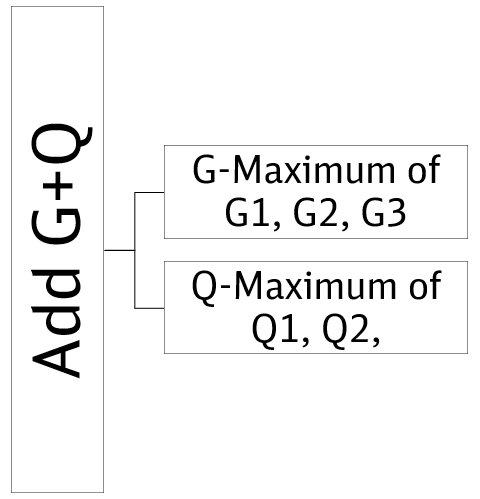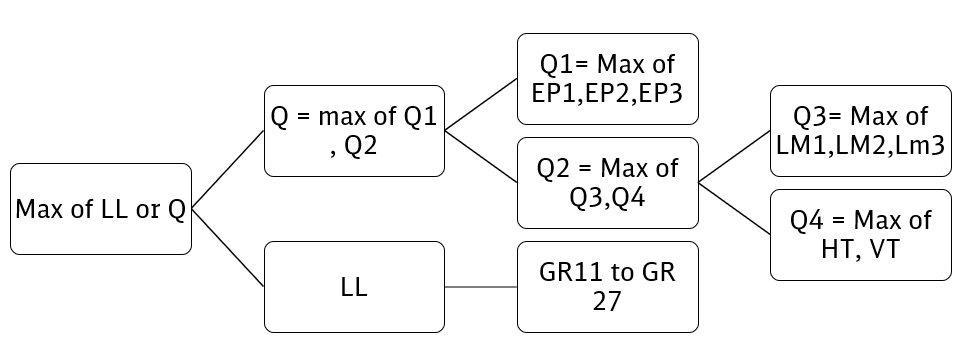Hello,
I want to add maximum load of two load group and define that addition as new load case.
G- Maximum of G1, G2, G3
Q- Maximum of Q1, Q2
as we can do this in prog maxima but it will give result and it won’t generate as new load case. I’m unable that check base of comb in wingraph under used or input load.
Hello,
I assume that you want to define combinations of actions with corresponding load cases. The best way here is to defined categories:
for G → G_1, G_2 and G_3 and set the item SUP to ALEX permanent exclusive within the action
It means in an action combination for the corresponding load cases of the three categories that only one load case (the most unfavourable) is used
for Q → Q_2 and Q_2 and set the item SUP to EXEX exclusive within the action
It means in an action combination for the corresponding load cases of the two categories that only one load case (the most unfavourable) or no load case due to variable loads are used.
SOFiLOAD:
ACT G_1 … PART G SUP ALEX → and also for G_2 + G_3
ACT Q_1 … PART Q SUP EXEX → and also for Q_2 + Q_3
and definition of the corresponding load cases
MAXIMA: definition of an action combination, e.g. explicit defined action combination for ULS
COMB 1 EXTR EXPL TYPE DESI BASE 2100
ADD G_1 FACU … FACF … corresponding load cases are assigned automatically
ADD G_2 FACU … FACF …
ADD Q_1 FACU … FACF 0
ADD Q_2 FACU … FACF 0
ADD Q_3 FACU … FACF 0
SUPP 1 EXTR MAMI … definition of the superposition values
More information about MAXIMA and combination rules inclusive example files are available in our Online Tutorials under TEDDY or SSD → Help → Online Help → Tutorials → Superpositions
With kind regards
Sabine Fahrendholz
Senior Product Manager
Thanks for the reply. The above method of excl and exex already used but as I mentioned earlier, we can’t call that comb generated by maxima as independent load in further load superposition. Please check below how much nesting of load combination required
Waiting for reply.
Maybe it’s a new example of some misunderstandings about “load case”-s. Very obsolete terms in Sofistik. The real load “load case” and the result “load case”, both are called “load case” (LC),but there is diference:
Load LC, where the loads are saved and you can see it in Used or Input loads in Wingraf
Result LC, where results are saved and you cas see it in Results in Wingraf
even worst…e.g. if you define loads in LC number 10 and calculate it, the results of calculation are saved in the same LC number 10. So then LC nr. 10 have 2 parts, in the same LC are saved loads and results. Both are visible in wingraf.
And… module MAXIMA can not combine loads, only results. Superpositions of combined result LC can be saved in new LC that does not contains any loads.
If you want to combine real load LC you can do it manually in module SOFILOAD.
Thanks! Got it that both LC of load and result are different. But still not getting method of doing above load superposition for such 4 sub layers load combination. What particular way/method or command we can use for this to execute.
Hello Wasee-Khan,
regarding the wording:
The current design codes provide action combinations and do not note anything to single load case. The assignment of the single load cases to actions and how these load cases should be used in combinations (permanent, conditional, exclusive) is the task of the engineer.
In SOFiSTiK we are using for load cases: single load cases with loads or combined load cases with load combinations or result load cases after superpositioning
MAXIMA:
action combinations → corresponds to the design codes
load case combinations → COMB EXTR STAN
With these combinations superpositions take place for results of the single load cases, e.g. the internal forces, displacements, support reactions
SOFiLOAD:
load combinations → combination of single load cases with loads in order to use them in a non-linear analysis
Regarding combination for bridge design:
It is common to define several combinations for pre-superpositions. The result load cases of each pre-superpositions can be assigned to an action for the use in another combination rules up to a final combination, the results of which are used for the design checks.
With kind regards
Sabine Fahrendholz
Senior Product Manager

